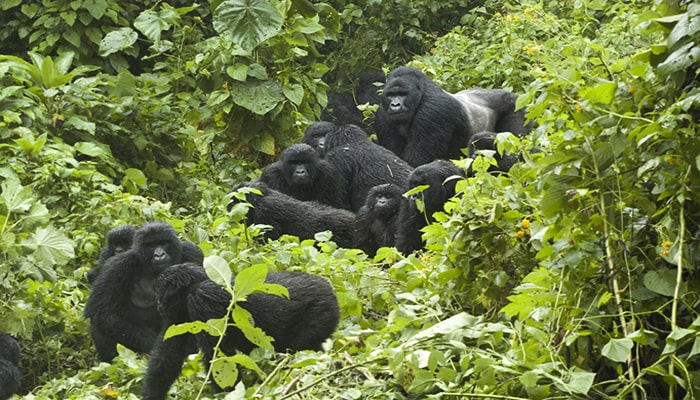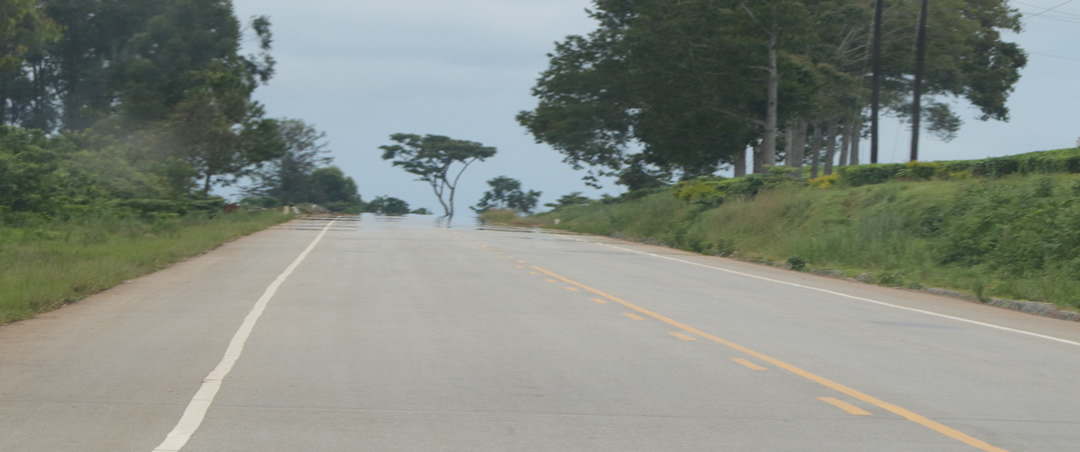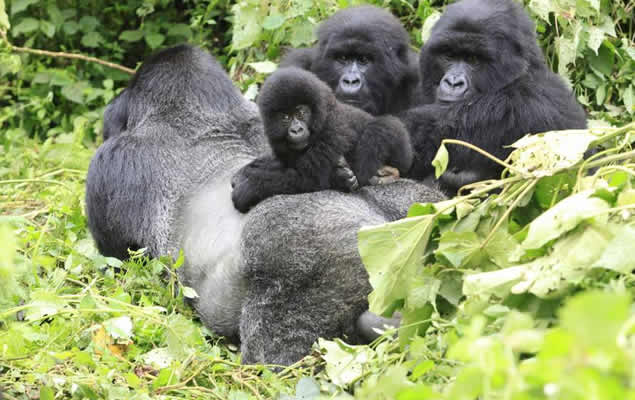
Different stories have been told about gorilla trekking with some travelers describing it as a strenuous adventure. This has raised lots of questions such as how fit do I need to be for gorilla trekking? Does gorilla tracking require particular physical levels? It is true gorilla trekking in Uganda, Rwanda and D.R. Congo is a lifetime wildlife encounter but it is also tiresome hence need for certain physical levels to enable trekkers make complete treks.
Mountain gorillas’ habitat is different from where other wildlife live- these large apes live in African tropical rain-forests at elevation range of about 2600-4500m. To be in position to move in the same pace with other trekkers’ speed, some level of physical wellness is needed. Trekking through high elevation to find mountain gorillas in the wild takes from 2-6 hours and visitor journey is characterized by navigating via the steep slopes, muddy ground floor though this depends on weather conditions.
A normal day of mountain gorillas includes several activities such as copulating, socializing, feeding and they move to different places to find what to feed on in a day. During the dry season they tend to move to further areas due to scarcity in food but this is the best time to visit Uganda or Rwanda to track these great apes considering the conducive weather conditions.
How to keep fit for gorilla trekking- Uganda or Rwanda
Prior visiting Uganda for gorilla trekking in Bwindi Impenetrable National Park & Mgahinga Gorilla National Park or Rwanda to track gorillas in Volcanoes National Park, you need to prepare well. First, do hiking exercises- take advantage of the hillsides back home or travel to Uganda or Rwanda early and practice before setting off for actual gorilla trekking. Visitors can decide to jog, run, do squats or stretching and all is intended to enable you tackle the high terrains in Bwindi National Park or Volcanoes National Park.
What makes gorilla trekking a challenging experience?
There are lots of factors that make gorilla trekking seemingly a challenging adventure but with some physical fitness level, visitors are guaranteed of a successful experience. The main factors include; location or movement of gorillas- mountain gorillas are wildlife species and never settled in one area. They move to different areas and the long distances mean long hours of trekking hence requiring some level of physical fitness.
Weather conditions & trails- weather conditions in gorilla habitats are never predictable, rains can start at any time of the day and the ground floor can turn muddy or steep slopes become slippery. During the wet or rainy season, most gorilla habitats such as Bwindi Impenetrable National Park experience dense vegetation growth which at times makes it a little challenging penetrating to find mountain gorillas.
Gorilla group allocated- Not all gorilla groups are easy or simple to track. Notable gorilla trekking regions such as Rushaga and Nkuringo are known for their high elevation and tracking their gorilla families requires a bit of physical fitness. This is also a case with the Susa A gorilla group in Volcanoes National Park, Northwestern Rwanda.
Best time to go gorilla trekking
Though physical levels are required for gorilla trekking, there is need to also understand when you should visit to see mountain gorillas. The dry season offers the best and friendly conditions for tourists to enjoy the most of gorilla trekking adventure in Uganda or Rwanda. When planning for gorilla trekking during the dry season, there are two phases- the December to February and June to September.
However, this doesn’t exclude holidaymakers from visiting Uganda or Rwanda for gorilla trekking during the wet or rainy season- March to May or October to November. These months of the year offer amazing mountain gorilla experiences though the challenge is that this is when most gorilla safari destinations experience heavy rains.
Besides physical fitness, what else is required for gorilla trekking?
Valid gorilla permits are important for any successful or complete gorilla trekking safari in Uganda or Rwanda. In Uganda, every valid gorilla permit is issued to eligible persons above 15 years at USD700 (for foreign non-residents), USD600 (foreign residents) & UGX250000 (for citizens within East African Community). While on gorilla trekking safari, Rwanda gorilla permits cost USD1500 per person and USD450 in Congo.
In addition to gorilla permits, visitors also require sturdy hiking boots or shoes, long sleeved shirts, insect repellents, camera free from flashlight, gardening gloves, sweater, passport, long trousers, hat, backpack, energy snacks, pair of cotton socks, bottled water, sweater, first aid kit or medical kit, sunscreen, rain jacket or poncho. Walking sticks will be of great use but you will find it at the park offices on the day of briefing or request one from the lodge.
Can I trek gorillas if I am disabled or elderly?
Although the minimum age limit for gorilla trekking is 15 years, the pregnant women, disabled or elderly aren’t excluded from enjoying this remarkable adventure. There are options for all these categories including gorilla sedan chairs. Your tour operator on ground is in position to book in advance gorilla sedan chair for you and in Uganda, they are available for booking at US$300-500.
How hard or difficult is gorilla trekking?
Gorilla trekking is without doubt a major highlight of all African safaris. How difficult gorilla trekking is all depends on several factors including age of visitor, altitude, location of gorilla groups, what time of the year you plan to visit Uganda or Rwanda for gorilla trekking and others.
How long does gorilla trekking take?
A normal gorilla trekking experience lasts 2-6 hours and when you come across a family of habituated gorillas, you will be guaranteed of an hour to spend face to face with them, learn more about how they behave, taking pictures, enjoy their unique body gestures. The park guide will be assigned to lead visitors and the guides take safety of you, interpret or explain the behaviors of these interesting apes before you etc.



